Spiny leaf insect, cool little easy to keep pets.
This is our newly aquired spiny leaf insect. This one is a female which is distinguishable by her shape and size, the males are often skinnier and look more "stick-like".
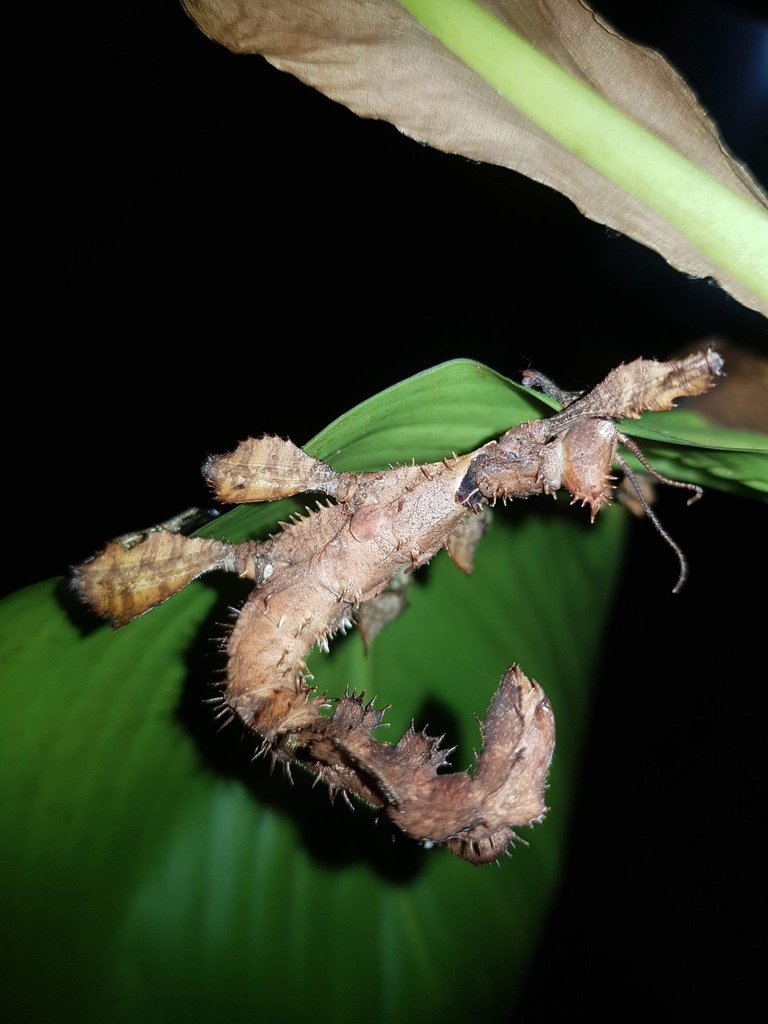
This particular female has been with a male in her last home so she likely has fertilised eggs and we can expect babys at some point, however even without a male these insects can reproduce. Her offspring will be identical to her and are often referred to as "clones".
Basically she can keep making herself over and over but needs a male to fertilise the eggs to produce varied offspring genetically.
She currently lives in an old aquarium with a plastic lid with air-holes however after we move house I will be constructing one out of mesh that will allow for better airflow and natural temperatures.
These guys can be found in the bush in NSW and Queensland, though have become a popular pet all around the world including America and Europe.
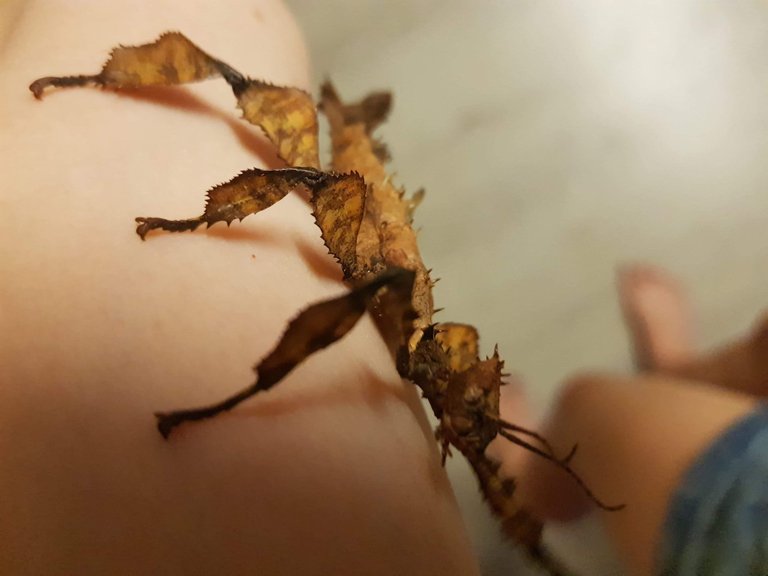
They hang from leaves and curl their body to camouflage themselves, this combined with their appearance makes them look most like a dead leaf.. The adults tend to move in a swaying motion which is also a form of camouflage, when they move like this to most potential predators they will look like a leaf or stick swaying in the breeze.
If threatened and unable to hide the female will curl into a defensive position like a scorpion with her spikes pointed outward, if she moves her legs the spikes are strong enough to puncture human skin.
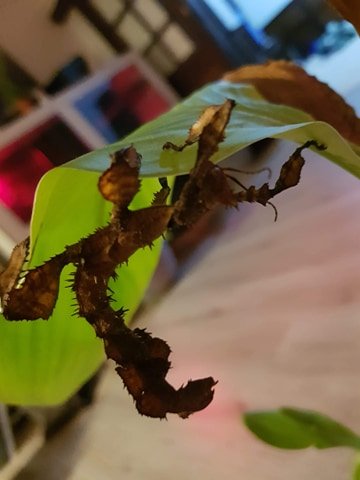
While both sexes have wings the females are far too small for her bulky body whereas the males have much larger wings in comparison to their body and can easily fly away, either if threatened to look for food or to look for a mate.
The females also get to live almost 3 times as long with most reaching around 18 months of age, males will usually make it to about 6 months.
The spiny leaf insect feeds almost exclusively on eucalyptus and gum leaves and although they can consume and live off of other types of plants it isn't ideal. Insects fed on other species of plant will often not achieve maximum size or will lose their colour. You also need to be careful they dont have a water dish they can drown in, it is usually best to keep it a bit humid and moist in the tank and we try and mist a couple times a day as well as leaving wet paper towels for her to drink from.
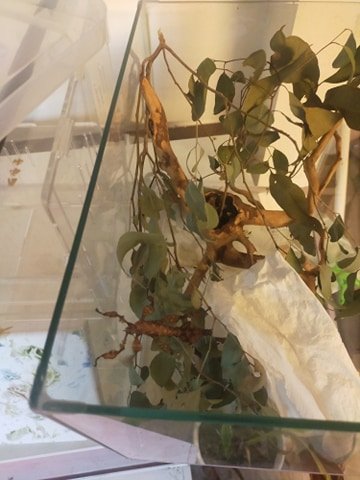
She's a fairly sweet little creature and spends most of her time just climbing around and munching on leaves. When you get her out onto your hand you can hardly feel her. They are very good climbers and have "sticky" feet which they use to cling upside down where they're most comfortable. Once you pick her up it's hard to get her back in the tank as she just climbs upward on your arm instead of onto her leaves. You have to be very careful as they are fairly delicate creatures.

These insects can be housed together quite happily without much issue and you will often find quite a few in the one tank. They are also prolific breeders so if you get a male and a female you can expect to have quite a few in a short amount of time. The female actually flicks her eggs with her tail causing them to land quite a distance away on the floor. In nature they would be picked up by ants and taken back into their nest where the ants eat the outer coating of the egg. Once they hatch they look like tiny little ants with red heads but they move quick, they won't take on their stick insect appearance until after their first molt which is also when they develop their spikes.
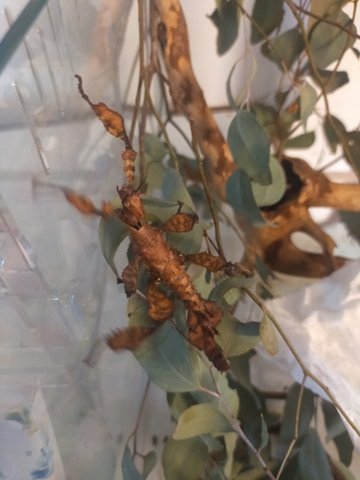
Keeping these insects is fairly easy, as long as they have access to water and food that's really all they need, you should change their leaves once a week with fresh ones and every so often clean out the base or substrate of their enclosure but otherwise that's about it.
They make a pretty cool little pet for kids with
A very exotic and beautiful pet :)
Kids with...? Short attention spans? :D
I remember seeing some of these at some wildlife rescue/rehab place we visited. Pretty short lifespan though that seems to be somewhat par for the course for insects, that would make me too sad.
aha,I think I was just meant to write kids, I dunno why I added with.
My editing skills are not superb lol
It is incredible to observe the wonderful things that nature gives us, this one is so wonderful as it is. Thank you for sharing it with us.